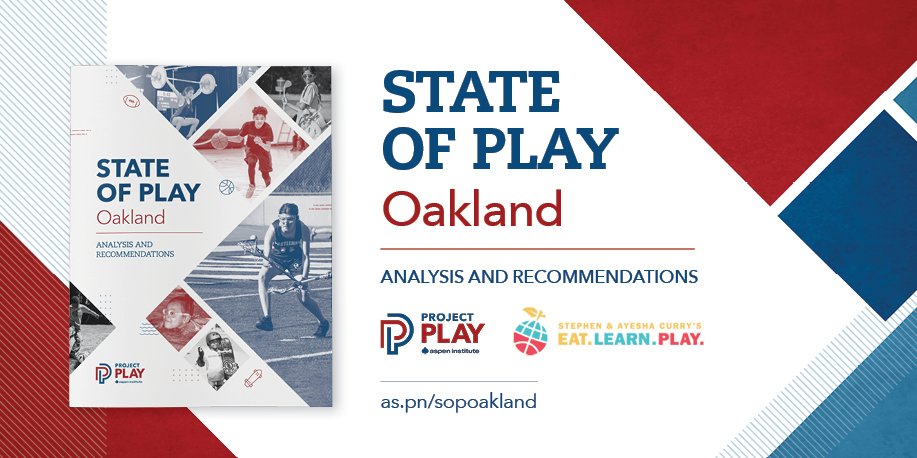Aspen Institute Partners with Eat. Learn. Play. to Release State of Play Oakland Report
State of Play Oakland Report introduction from Stephen Curry
State of Play Oakland shows ways to improve disparities in sports participation by race, gender and income
State of Play Oakland offers an assessment of the state of youth sports and physical activity in Oakland. The report is authored by the Aspen Institute as part of its Project Play initiative, and in partnership with Eat. Learn. Play.
Project Play’s work is anchored in the body of research that has emerged over the past decade, establishing the many benefits of physical activity including greater cognitive function, positive mental health, better educational outcomes, and lower health care costs in adulthood. Every child in Oakland should have the opportunity to be active through sports, play, and outdoor recreation, regardless of race, gender, income or ability.
State of Play Oakland includes 40 findings, youth survey results on what children want from their sports experiences, and one game-changing opportunity to grow access. It includes key insights that will serve as a blueprint and drive our PLAY strategies and investments as we move forward.
Some key findings in the report include:
Oakland youth are less physically active than the nation.
Only 14% of youth in Oakland meet the 60 minutes of physical activity per day recommended by the Centers for Disease Control and Prevention, below the national average of 23%. Oakland girls (9%) are less likely to be sufficiently physically active than boys (19%). Physical activity decreases as youth get older.
Access to quality parks is unevenly distributed.
Residents in Oakland neighborhoods where people most identify as a person of color have access to 66% less park space per person than those in predominantly white neighborhoods. Although 89% of Oakland residents live within a 10-minute walk of a park, the amenities and investments are much lower than comparable U.S. cities. In a study by Oakland Parks and Recreation Foundation, 55% of respondents said poor park maintenance was a barrier to visiting or fully utilizing Oakland parks. Most children don't use rec center spaces, and those that do often are in wealthier areas.
Oakland lacks equitable access to recreational sports league opportunities.
White children are three times more likely than Latino/a youth and two times more likely than Black and Asian kids to play on a recreation center team. In the Montclair, Dimond and Laurel neighborhoods, 41% of youth have played sports on a rec center team. In Deep East Oakland, that figure is just 13%. Boys are more likely to play on rec center teams than girls.
Youth want to try different sports and need more sustainable opportunities.
Oakland youth identified 24 sports that at least 10% of them said they want to try. That’s far more interest than youth expressed in Baltimore or Columbus, Ohio, where the Aspen Institute produced previous community reports. Oakland youth don’t have a sustained way to play new sports because the city lacks the capacity to create lasting infrastructure for continued participation.
Playing with friends is the No. 1 reason to play sports.
Youth told us that friendships with peers and having fun are the main reasons they play. Winning games ranked seventh and chasing college athletic scholarships was 12th.
Physical education in Oakland lacks funding and accountability.
PE is the top location where youth told us they play sports. Yet only half (51%) of elementary school principals at Oakland Unified School District reported having a credentialed PE teacher on staff.
There’s strong interest in trying individual sports.
Archery is the No. 1 sport both Oakland boys and girls said they most want to try. Karate/mixed martial arts, rollerskating, fencing, rock climbing, figure skating, gymnastics, skateboarding, and parkour also ranked high.

